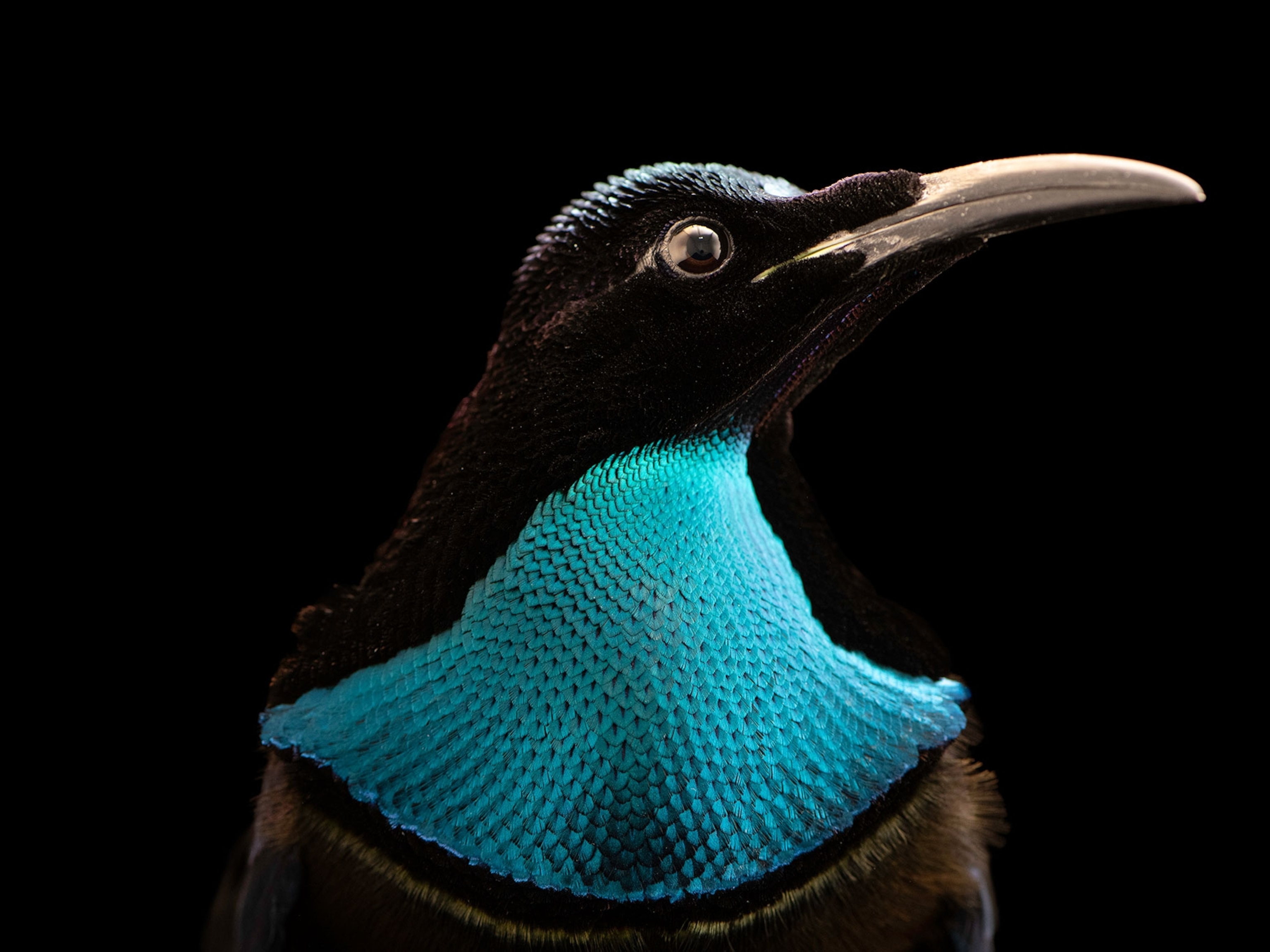
Why Do Small Birds Have Sweeter Songs?
An anatomical difference in some birds produces sounds that are music to the human ear, experts say.
When you have a friend who loves karaoke but isn't exactly Mariah Carey, you can still be nice and say "You sing like a bird!"
They don't have to know you mean this bird.
Saturday's Weird Animal Question of the Week has been mulling the multiplicity of birds sounds since Elzbieta Zaba asked via Facebook, "Why do some little birds sing so beautifully and the big ones don't?"
Pretty Little Lyres
First things first: "Beauty is in the ear of the beholder," Marc Devokaitis, of the Cornell Lab of Ornithology, says via email.
While it's true many species aren't what you'd call melodious, they still make amazing sounds. Take the "otherworldly" call of the barred owl, or the endless tunes that might come from a common raven, which has 33 types of calls in its repertoire, Devokaitis says.
That said, "small birds have the anatomy and vocal behavior that happens to sync up well with humans' perceptions of 'song,'" he says.
That anatomy is the syrinx, the bird version of our larynx.
An order of birds called Passeriformes—which make make up 60 percent of the roughly 10,000 known bird species, including songbirds—have the most complicated syrinx, according to J.V. Remsen, curator of birds at the Louisiana State University's Museum of Natural Science.
Passeriformes have independent control of either side of the syrinx, which enables them to create such a great variety of sounds, from whistles to clicks; songbirds up the vocal ante with their ability to "learn new versions of songs, not just inherit them," he says.
Many Passeriformes birds are tiny, like the hermit thrush, which weighs about an ounce (28 grams) and has what Devotaikis calls a "complex and haunting" song.
There is at least one exception to the smaller-is-sweeter rule: Australia's pheasant-size superb lyrebird, a type of passerine, is "undoubtedly the bird with the world's most complex song," Remsen says by email. "It can imitate anything."
Many birds that make highly involved songs are also intelligent, Dan Mennill, a biologist at the University of Windsor in Ontario, Canada, notes by email.
Songbirds, hummingbirds, and parrots "have evolved the capacity to learn songs from their parents," a trait shared by only a few other animals—namely bats, whales, dolphins, and humans.
Animals with this ability are likely to have more elaborate songs, Mennill says, because each new generation builds on the tunes of the previous one.
Bright Colors, "Pitiful Songs"
For monogamous birds, elaborate songs sometimes substitute for elaborate plumage, and vice versa, Remsen says.
Take tanagers and wrens, which mostly mate for life. Though tanagers are among the most elaborately colored passerines, "they have pitiful songs," Remsen says, whereas drably colored wrens "have some of the most amazing sounds." (Related: "Tropical Wrens Sing Complex Tunes, Researchers Find.")
In other words, these species generally put their energy into attracting a mate either by its looks or its song—but not both. Since monogamous birds need to find just one mate, the birds don't invest as much in over-the-top courtship strategies.
On the other hand, in promiscuous species—in which both males and females have multiple partners—"both plumage and vocal stuff goes crazy," Remsen says.
A spectacular example is New Guinea's birds of paradise. (Read about birds of paradise in National Geographic magazine.)
You Be the Judge
We all have our own ear for what makes beautiful music. Luckily, you can tune into birdsongs on the Cornell Lab of Ornithology website and Xeno Canto, a website that shares recordings of wild bird sounds from around the world. (Also see "The Ethical Flap Over Birdsong Apps.")
You might even find some that are nice enough to tweet.
Weird Animal Question of the Week answers your questions every Saturday. If you have a question about the weird and wild animal world, tweet me, leave me a note or photo in the comments below, or find me on Facebook.





